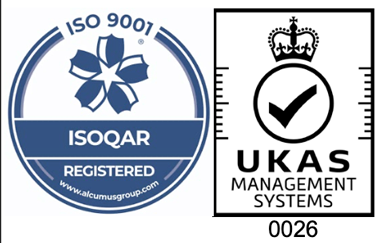The Rubber Seal Design Process
28th February, 2019
They create a seal between two pieces which, without the rubber gasket, would not fit together properly. Rubber seals are also great at preventing leaks, and can be used to stop metal parts rubbing together.
Good quality rubber seals are designed and manufactured using a specific formula. When designing a rubber gasket, it’s important to consider the right compound, hardness, and profile. Without considering these design elements, the rubber seal will likely be unfit for purpose, causing untold problems.
How is the compound for a rubber gasket selected?
When selecting a compound (material) for a rubber gasket, it’s important to consider the application at hand, the intended location of the rubber seal, and the client’s budget.
When designing a rubber gasket bespoke for a client, we look at the following areas of consideration:
- Media
Will the rubber gasket be exposed to chemicals, oils, fuels, saltwater, or freshwater Is any exposure going to be short-lived, or long-term? - Temperature
What is the service temperature range that the rubber seal will be expected to cope with? Will the rubber gasket be at risk of heat aging or thermal cycling? - Application
Will the rubber seal or rubber gasket be installed using PSA tape? If the rubber seal is to be attached traditionally, what is the flange type and material, and the bolthole pattern? - Pressure
Will the rubber gasket be exposed to high or low pressures
When selecting a material for a rubber gasket, it may be necessary to consider the differences between commercial vs speciality compounds. Though a speciality compound may have more unique properties, it will usually cost a lot more than a commercial compound, and could be subject to a higher MOQ.
How is the hardness of a rubber seal selected?
The hardness of a material – especially of polymers, elastomers, and rubbers – is measured in durometers. When deciding on the necessary hardness of a rubber gasket, it’s important to consider the application at hand, as well as the characteristics of harder and softer rubbers.
Soft rubber is better at cushioning, but is also more prone to compression set. Compression set is when a material becomes deformed due to an applied force. A rubber seal that is over compressed will not perform properly and will cause sealing problems.
Harder rubber, on the other hand, provides excellent impact resistance but will be far less elastic. In the same way that a rubber seal made of too-soft rubber could result in compression set, a rubber gasket that is too hard might make it impossible for a seal to close fully.
Which profile options are available for rubber seals?
Rubber seal profiles (or shapes) are varied, meaning the right selection is crucial to ensuring the success of the project at hand.
Lip seals have an extended lip, and don’t require full compression to result in an effective seal.
D-seals are designed with a half-moon type bulb which provides sealing under pressure, and a flat section that can be attached to the sealing area with adhesive.
P-seals offer great sealing under compression thanks to a rounded bulb, and a flat stem. The flat stem is usually used to attach the rubber gasket using nuts and bolts.
Finally, E-seals are designed to support compression using a half-moon bulb. They also feature a tail, which can be laid on top of a substrate, and a gap where metal bar stock is inserted so as to attach the seal.
Bespoke Rubber Seals | Aquaseal Rubber
To discuss your bespoke rubber gasket/rubber seal project, get in touch with a member of our team today.


